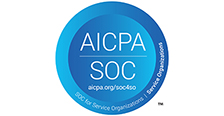
-
January 1, 1900
Minority Auto Dealers: Succeeding Despite 9/11 and The Economy
by Rocky L. Peterson
Prior to 2001, the auto industry was surging after three record years of sales. The National Automobile Dealers Association ("NADA") reported sales of new vehicles in 1991 as 16.9 million; 17.4 million in 2000; and 17.1 million units in 2001. A drop in 2001 totals was projected to be a result of increased gas prices, massive layoffs and predictions of a recession.
NAMAD
Despite some overall growth, minority auto dealers from 1978 to 1998 had survived three recessions each one resulting in the closing of dealerships. In response to a request of the National Association of Minority Automobile Dealers ("NAMAD"), several auto manufacturers participated in a moratorium limiting closings of minority dealers, who were experiencing financial difficulties. The moratorium was necessary because minority dealers are less capitalized and are therefore less likely to weather economic storms. They simply cannot wait for the economy to turn if they do not have the cushion to wait out a recession.
The events of September 11, 2001 coupled with climbing gas prices, layoffs, stock market instability and the war on terrorism contributed to a downturn in sales and plummeting of profits. Sales for 2002 were estimated by NADA to be 16.8 million units. This slight decline in overall sales was partially due to introduction of zero percent financing which was generally helpful to minority automobile dealers.
In an effort to assist all automobile dealers after September 11, the manufacturers began to implement zero percent financing. The University of Michigan’s Office for the Study of Automotive Transportation states that as a result of zero percent financing, sales picked up significantly in the last quarter of 2001, thus helping to offset the impact of September 11, 2001 on car dealership profits. For minority dealers, particularly the zero percent financing was not a 100% cure-all. A lot of the minority clients were not eligible for the incentives and could not participate in the program. Hence sales of some minority dealers continued to decline.
Based on total number of sales, 2002 was the fourth best year in history for auto sales. In an effort to continue this rise, minority automobile dealers have attempted to maximize opportunities for themselves in a variety of ways. Manufacturers have assisted dealers with incentives such as rebates and zero percent interest. Reduction of inventory has also allowed dealers to reduce holding costs and interest charges. Staff cutbacks have also been utilized to lower costs. A significant influence has been the increased importance of imported vehicles. Those dealers who have added imported vehicles to their lots have noticed increased sales.
Financial Assistance
In addition to these measures, minorities seeking to own their own dealerships are receiving assistance from the industry. NAMAD has asked every manufacturer to commit to the initial goal of 15% majority ownership of the retail network by ethnic minorities. Certain manufacturers have already begun to work with NAMAD to identify opportunities for minorities to obtain dealerships. Prospective owners are urged to take advantage of programs offered by some manufacturers which help minorities complete training and dealership development.
Finally, as Dorian S. Boyland of the Boyland Auto Group, the 2003 Black Enterprise Auto Dealers of the Year, says: "you have to have a passion for this business; in which you can make or lose a lot of money. The bottom line is to make money."
Rocky L. Peterson is a partner at Hill Wallack and partner-in-charge of the Municipal Law and School Law Practice Groups. He also has many years of experience representing minority auto dealer principals.


